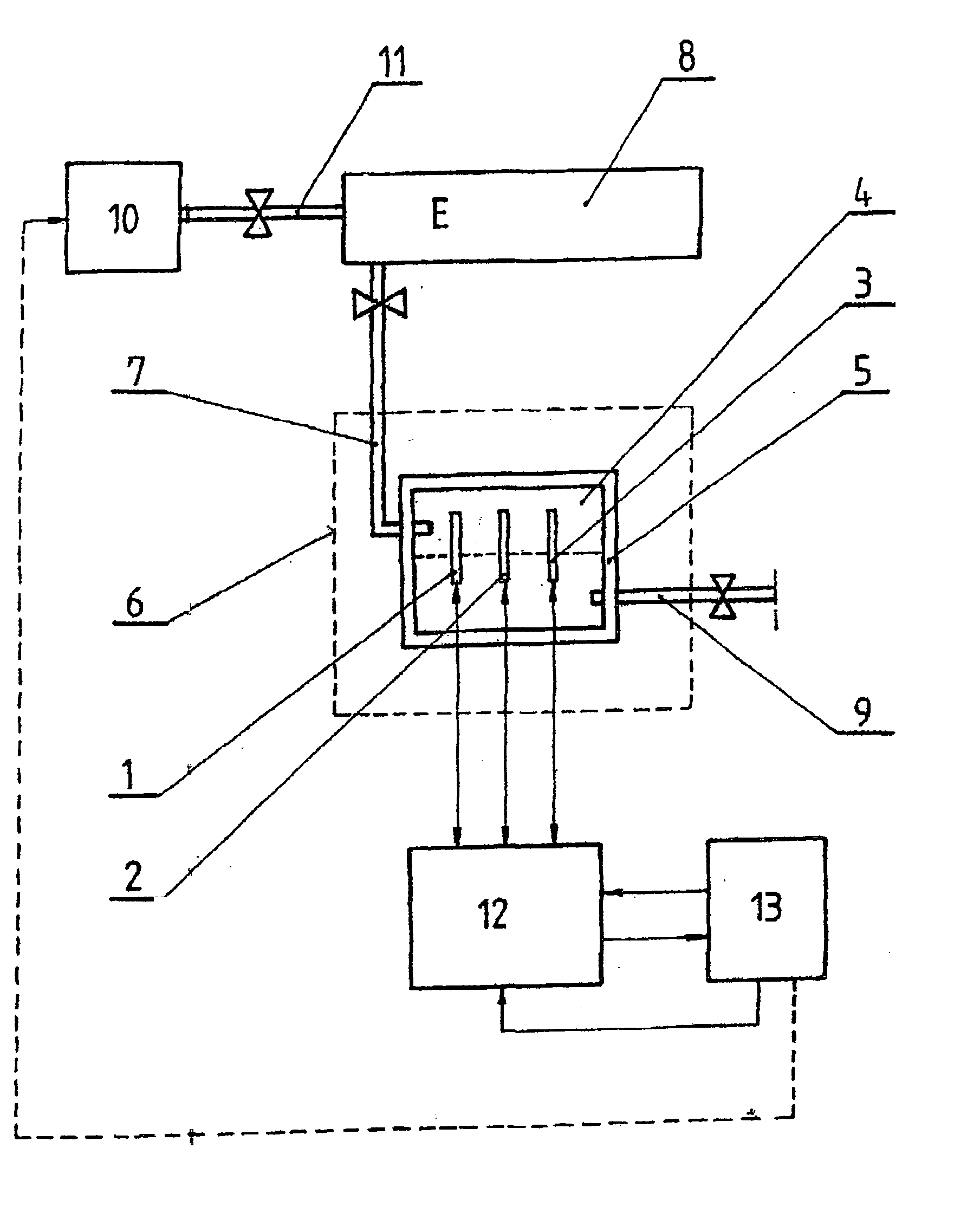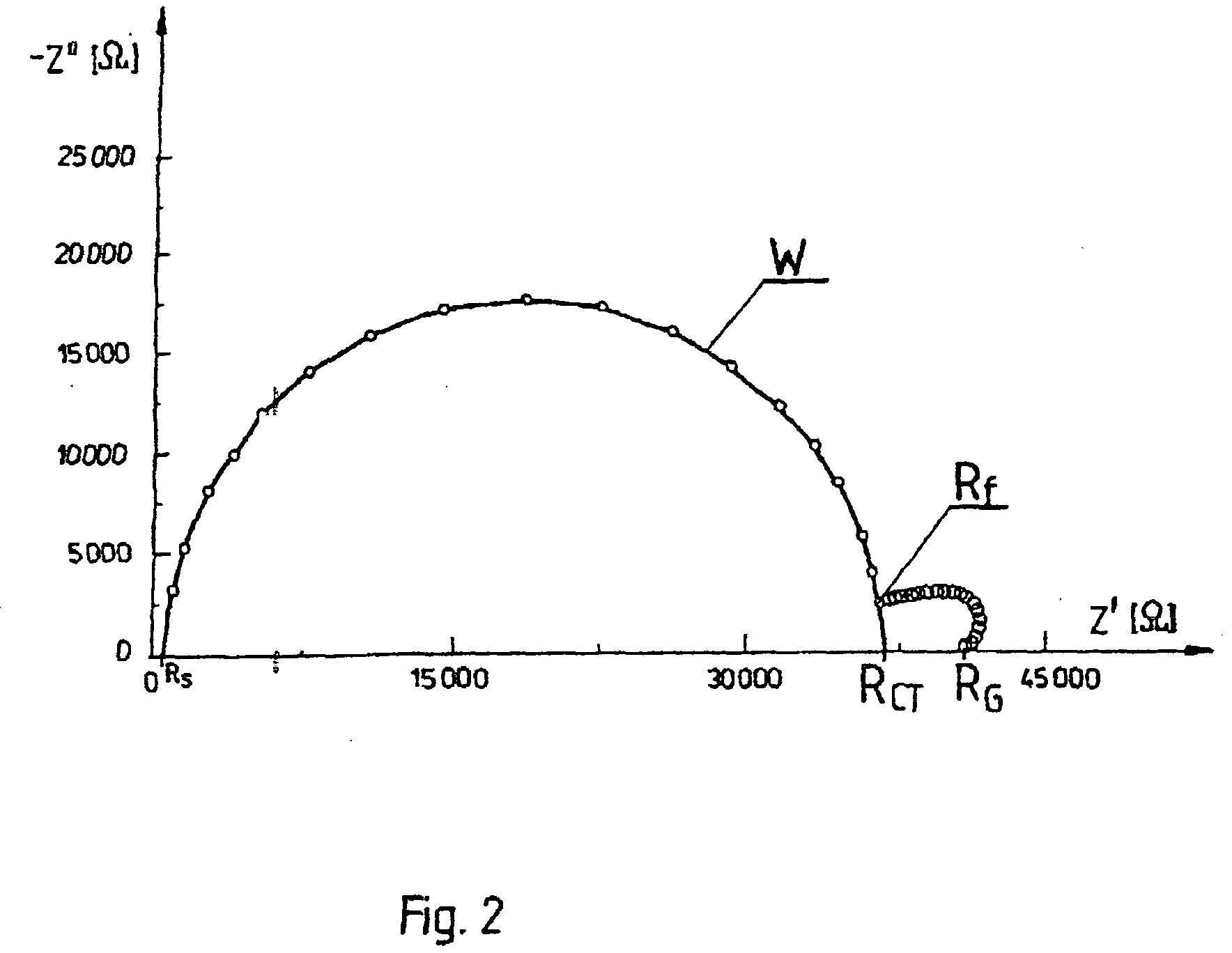Method and system for measuring active animal glue concentration in industrial electrolytes
a technology of active animal glue and industrial electrolyte, which is applied in the direction of liquid/fluent solid measurement, instruments, photographic processes, etc., can solve the problems of deterioration of cathode quality, high inadvisable dendrite formation, and inability to direct measure the active animal glue concentration in the electroly
- Summary
- Abstract
- Description
- Claims
- Application Information
AI Technical Summary
Benefits of technology
Problems solved by technology
Method used
Image
Examples
example 1
[0028] The described system is used for measuring animal glue concentration in copper electrorefining system. Three electrodes, working ultramicroelectrode (1) is made of gold wire of a diameter 40 .mu.m, auxiliary electrode (2) is a platinum plate 0.05 cm thick and surface of 0.5 cm.sup.2, and calomel reference electrode (3) are immersed up to 1 cm in the electrolyte inside a glass measuring cell (4) surrounded by an aqueous coat (5). The system is placed in a Faradaic cage (6). A pipe (7) whose inlet is put in a tank (8) of a electrolyte (E) is inserted to the glass cell (4). The second pipe (9) fastened in the glass cell is led out to electrorefining system. An animal glue container (10) is connected by a pipe (11) to the tank (8). The electrodes (1, 2, 3) are connected to an electrochemical meter (12), i.e. spectrum analyser (FRA). The controlling entry of the meter (12) is connected to an exit of a programming apparatus (13) which comprises microcomputer Pentium and a measuring...
example 2
[0029] The method of determining standard characteristic is described in the presented system. For given conditions of animal glue dosage in industrial electrolyte (E) during copper electrorefining process, standard resistance (R.sub.G) characteristic is taken off in relation to active animal glue concentration in the electrolyte using impedance spectroscopy method for measuring several points which correspond to gradual addition of defined glue portions. The results are approximated by a linear relationship of said standard resistance vs. said active animal concentration.
example 3
[0030] The measurement of glue concentration in electrolyte (E) in industrial process is carried out when there is a continuous flow of electrolyte (E) through a measuring cell (4) at flow intensity chosen appropriately for existing conditions. DC potentiostatic signal of -0.5 V with superimposed AC signal of an amplitude of 0.010 V and frequency range from 200 kHz to 0.1 Hz is applied cyclically by a programming apparatus (13). On the basis of the registered spectrum, resistance value characteristic of the studied electrolyte is determined. The determined value is written in a standard characteristic from which can be read off animal glue concentration. There are three methods to determine the resistance characteristic of said electrolyte (E).
PUM
| Property | Measurement | Unit |
|---|---|---|
| Length | aaaaa | aaaaa |
| Electric potential / voltage | aaaaa | aaaaa |
| Electric potential / voltage | aaaaa | aaaaa |
Abstract
Description
Claims
Application Information
 Login to View More
Login to View More - R&D
- Intellectual Property
- Life Sciences
- Materials
- Tech Scout
- Unparalleled Data Quality
- Higher Quality Content
- 60% Fewer Hallucinations
Browse by: Latest US Patents, China's latest patents, Technical Efficacy Thesaurus, Application Domain, Technology Topic, Popular Technical Reports.
© 2025 PatSnap. All rights reserved.Legal|Privacy policy|Modern Slavery Act Transparency Statement|Sitemap|About US| Contact US: help@patsnap.com



